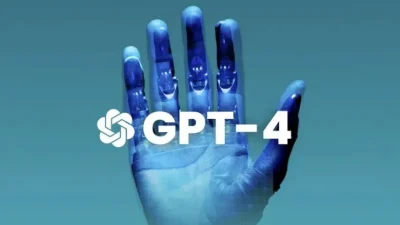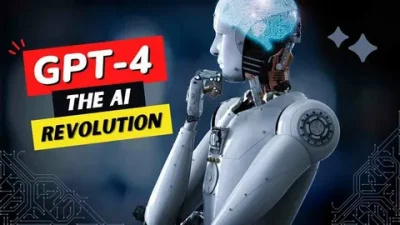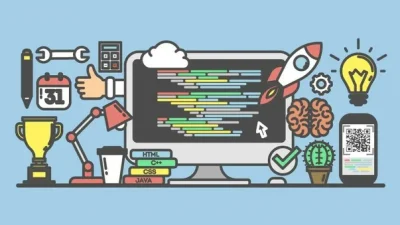GPT-4, the advanced language model developed by OpenAI, has revolutionized how people interact with artificial intelligence. Whether you are a professional looking to streamline workflows, a creator seeking inspiration, or a business aiming to enhance customer experiences, GPT-4 offers numerous applications across various platforms. This article explores the primary ways to access GPT-4, the platforms supporting it, and practical use cases to help you choose the best option for your needs.

Platforms for accessing GPT-4
Several platforms enable users to interact with GPT-4, ranging from web-based interfaces to robust APIs. Each platform caters to specific user needs and expertise levels, providing flexibility in how GPT-4 is utilized.
Web interfaces
The most common and user-friendly way to access GPT-4 is through web-based platforms provided by OpenAI and third-party developers. These platforms feature intuitive interfaces where users can enter text prompts and receive responses in real-time. Web interfaces are ideal for:
- Casual users exploring GPT-4’s capabilities.
- Content creators generating articles, stories, or marketing materials.
- Students and researchers seeking assistance with ideas or analysis.
Notable examples include OpenAI’s ChatGPT platform, which offers a seamless experience with features like saved conversations and adjustable settings for creativity levels.
Mobile applications
For users who require on-the-go access, mobile applications integrating GPT-4 have become increasingly popular. These apps provide the convenience of AI-powered assistance in your pocket. Key features often include:
- Voice-to-text integration for hands-free interaction.
- Optimized layouts for smaller screens.
- Integration with other mobile tools, such as calendars or note-taking apps.
Popular mobile applications, such as the ChatGPT app for iOS and Android, extend the functionality of GPT-4 to mobile devices, ensuring users can stay productive anywhere.
API integrations
APIs (Application Programming Interfaces) allow businesses and developers to integrate GPT-4 into their own systems, creating customized applications tailored to specific needs. APIs are highly versatile and are used for:
- Building chatbots for customer service.
- Automating repetitive tasks, such as drafting emails or summarizing reports.
- Enhancing existing software with AI-driven features.
The OpenAI API provides detailed documentation, making it accessible for both seasoned developers and those new to integrating AI solutions.
Comparison of platforms for accessing GPT-4
| Platform | Best For | Features | Accessibility |
|---|---|---|---|
| Web interfaces | General users | Intuitive UI, saved chats, adjustable tone | Browser-based |
| Mobile applications | On-the-go productivity | Voice-to-text, mobile-friendly | iOS, Android |
| API integrations | Developers, businesses | Customizable, scalable solutions | Requires programming |
Everyday use cases of GPT-4
The applications of GPT-4 extend far beyond technical fields. Individuals and professionals alike can find numerous ways to leverage its capabilities in everyday scenarios.
Personal productivity
For personal use, GPT-4 can act as a digital assistant, helping with:
- Task management. Creating to-do lists, setting reminders, or organizing schedules.
- Learning support.Explaining complex topics, summarizing articles, or providing tutoring in various subjects.
- Creative inspiration. Assisting with writing stories, poetry, or brainstorming project ideas.
Business applications
Businesses benefit significantly from GPT-4’s versatility. Some key business-oriented applications include:
- Customer support. Automating responses to frequently asked questions through AI chatbots.
- Content creation. Generating engaging marketing copy, blog posts, or product descriptions.
- Data analysis. Summarizing large datasets, identifying trends, and drafting reports.
Many businesses have already integrated GPT-4 into their operations to improve efficiency and reduce costs.
Creative and artistic endeavors
Creators and artists have found GPT-4 to be a powerful tool for inspiration and collaboration. Applications in creative fields include:
- Drafting screenplays or novels with AI-generated dialogue.
- Generating ideas for visual art or design projects.
- Composing music lyrics or scripts for performance.
Everyday use cases of GPT-4
| Scenario | Example Tasks | Benefits |
| Personal productivity | Task management, learning assistance | Saves time, enhances learning |
| Business applications | Chatbots, content creation, analytics | Cost-efficient, scalable solutions |
| Creative endeavors | Writing, art inspiration, collaboration | Boosts creativity, reduces blocks |
Advanced possibilities with GPT-4
As AI technology evolves, GPT-4 continues to open new doors for innovation. Advanced users and organizations have explored its potential in areas such as:
Software development
Developers can use GPT-4 to assist with coding tasks, such as:
- Writing and debugging code snippets.
- Documenting software projects.
- Generating algorithms based on user requirements.
Education and training
Educational institutions leverage GPT-4 to create interactive learning experiences, including:
- Personalized tutoring systems.
- Generating adaptive tests and quizzes.
- Automating administrative tasks like grading.
Healthcare applications
In the medical field, GPT-4 is being explored for:
- Summarizing patient histories.
- Assisting with medical research.
- Providing mental health support through AI chat services.
Advanced applications of GPT-4
| Sector | Application Examples | Impact |
| Software development | Code generation, debugging, documentation | Speeds up development processes |
| Education | Tutoring, test creation, grading | Enhances learning experiences |
| Healthcare | Patient data summaries, mental health AI | Improves efficiency, accessibility |
Conclusion
GPT-4 is a transformative tool that adapts to various needs, from simplifying everyday tasks to driving innovation in complex fields. By choosing the right platform—whether web-based, mobile, or through API integration—users can unlock its full potential. As adoption grows, the possibilities for GPT-4 will continue to expand, shaping the future of AI-driven solutions.





